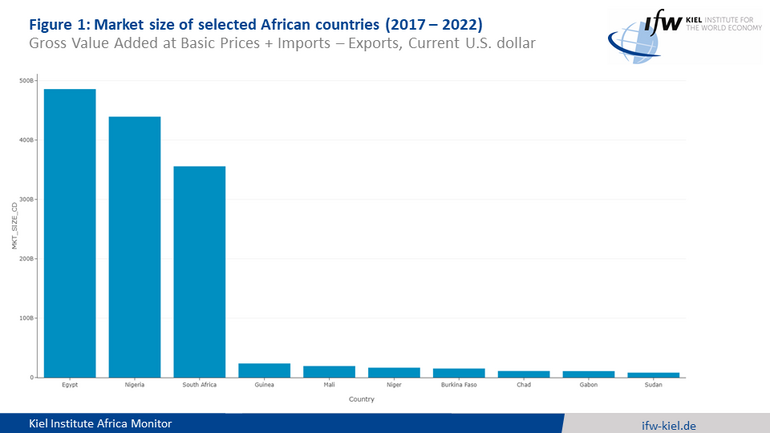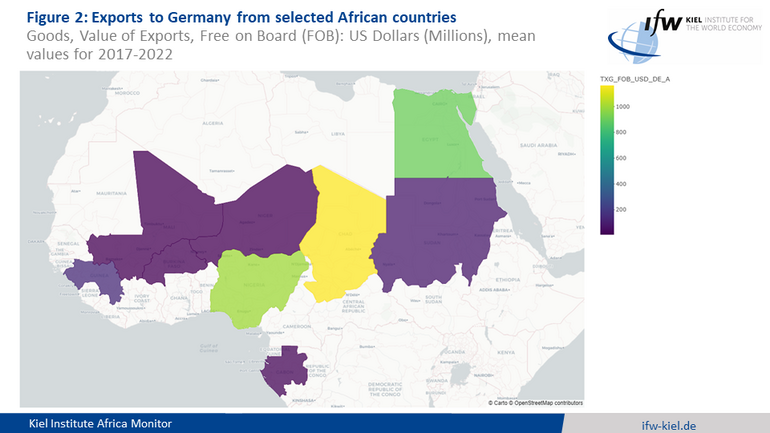News
Kiel Institute Africa Monitor: Contributing to a Fact-Based View of Africa

“Public discourse on Africa is frequently based on biased assumptions and not informed by statistical data,” states Sebastian Krantz, Researcher at the Kiel Institute’s International Development Research Center and the head of the Kiel Institute Africa Monitor. “Especially when specific countries become the center of attention, as we saw this year with the upheavals in Niger and Gabon, dependable economic data can provide much-needed clarity.”
For example, the Africa Monitor provides easy access to economic data that can be used to compare the market size of countries like Niger and Gabon that had coups this year with other coup-affected countries and the economic powerhouses on the continent (Figure 1). That puts in perspective that the economies of the coup-affected countries are very small, at least when considering them in isolation. The tool also has functionalities to compare regional blocks and bilateral economic relationships. These, for example, allow identifying with a few clicks which countries Germany has the most significant trade ties with (Figure 2).


“Many businesses, policymakers, journalists, and members of the public unfamiliar with the continent often lack the hard facts, like market size or current trade relationships, to fully grasp the economic repercussions of emerging developments,” says Prof. Dr Tobias Heidland, Research Director at the Kiel Institute. “The Kiel Institute Africa Monitor empowers users to quickly access facts about Africa, enabling them to visualize or download tailored data without the hassle of manually combing through various databases or navigating intricate statistical software.”
In general, the Monitor allows to visualize data and build or export custom graphs for presentations and reports. Advanced users can download different indicators from our database directly and integrate it into their workflow via the APIs.
Data is collected from several public sources such as the International Monetary Fund and the World Bank, and updated regularly. An overview of the almost 1,000 data series that can be accessed through the Monitor can be found under the “Data catalog” tab. The Monitor and underlying database are hosted at the Kiel Institute for the World Economy. Occasionally, researchers of the Kiel Institute provide data stories (research briefs) to highlight certain developments and showcase some of the analytical potential.
The Kiel Institute Africa Monitor is a joint effort of the Research Center International Development and the Kiel Institute Africa Initiative, and part of the project Cluster for Economic Research on Africa that is jointly funded by the Federal Ministry of the Economy and Climate Action and the Federal Ministry of Finance.


